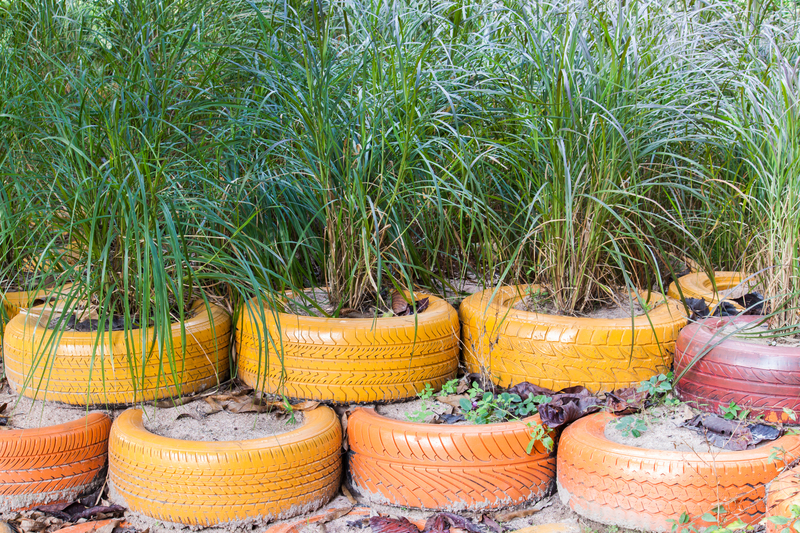Sensitive and Effective Clutter Removal for Hoarder-Affected Homes
Hoarder-affected homes pose unique challenges for family, friends, and professionals who aim to restore safe, comfortable living spaces. Sensitive and effective clutter removal is essential to ensure that the well-being of the occupant remains the top priority. The process is much more than hauling away items; it requires compassion, understanding, and professional clutter cleanup techniques. This comprehensive guide provides insights, actionable steps, and best practices for safely and respectfully handling clutter removal in hoarder situations.

Understanding Hoarding Disorder and Its Impact
What Is Hoarding Disorder?
Hoarding disorder is a recognized mental health condition where individuals have persistent difficulty discarding or parting with possessions, regardless of their value. This behavior often leads to overwhelming accumulation of items, resulting in cluttered and sometimes unsafe living conditions. It's important to recognize that clutter in hoarder-affected homes is often a symptom of deeper emotional and psychological issues.
- Hoarding affects approximately 2-6% of the population
- It can be accompanied by anxiety, depression, and trauma
- Clutter removal must be approached with empathy and understanding
The Effects of Hoarding on Health and Safety
Excessive clutter can endanger the physical health of residents. Common threats include:
- Fire hazards due to blocked exits or flammable materials
- Trip and fall risks
- Mold, mildew, and pest infestations
- Compromised air quality and respiratory issues
- Isolation and strained relationships
Therefore, effective clutter removal services are not just about aesthetics--they're about restoring safety and dignity.
Why Is Sensitivity So Important in Hoarder Cleanups?
Sensitivity during clutter removal in hoarder-affected homes is crucial for long-term success. These spaces are often tied to the individual's identity, memories, and history. Abrupt interventions or judgments can increase emotional distress and resistance, while a thoughtful, empathetic approach paves the way for sustainable change.
- Builds trust between the person and the cleanup team
- Reduces shame and guilt
- Encourages participation in clutter cleanup
- Promotes healthier habits moving forward
The Step-by-Step Process to Clutter Removal for Hoarder Homes
Achieving sensitive and effective clutter removal involves a structured approach, guided by communication, clear planning, and appropriate resources.
1. Preparation and Assessment
- Conduct an initial assessment of the property with the resident present if possible
- Identify hazards such as biohazards, structural damage, or blocked exits
- Establish goals for the cleanup (e.g., restore access to rooms, improve hygiene, reduce health risks)
- Consult mental health professionals or social workers for guidance
- Discuss and set boundaries--what will and will not be removed
2. Building Trust and Communication
- Listen to the resident's concerns and feelings
- Use nonjudgmental language--avoid words like "junk," instead use "items" or "possessions"
- Respect sentimental attachments and offer choices wherever possible
- Keep the individual included in every step, unless health or safety makes immediate action necessary
3. Developing a Cleanup Plan
- Set realistic timelines so as not to overwhelm the resident
- Identify priorities--focus first on areas critical to safety and health
- Prepare cleaning supplies, protective equipment, and clutter removal bags or buckets
- Arrange for professional clutter removal services if the situation is severe
4. The Decluttering Process
The actual removal requires ongoing sensitivity and patience:
- Begin with clutter that poses the highest risk (food waste, expired medications, moldy items)
- Use sorting systems--such as "keep," "donate," "discard," and "unsure" piles--to ease decisions
- Handle items respectfully, asking for approval before discarding or moving personal belongings
- Offer frequent breaks to prevent overwhelm
- Provide emotional support or a comforting presence during difficult moments
5. Deep Cleaning and Sanitization
Once clutter is removed:
- Sanitize surfaces to remove bacteria, dust, and allergens
- Address biohazards such as pet waste, mold, and spoiled food with proper cleaning agents
- Check for and rectify structural issues caused by excessive clutter
- Deodorize rooms to restore freshness and comfort
6. Restoration and Organization
- Install storage solutions and organizational aids (shelves, bins, labels)
- Rearrange furniture to improve safety and ease of movement
- Encourage new routines for ongoing maintenance
- Connect the resident with community resources for continued support
Best Practices for Sensitive Hoarder House Cleaning
Empathy and Patience Lead the Way
Successful clutter removal in hoarder-affected spaces demands empathy above all. Recovery from hoarding disorder is a marathon, not a sprint. Here are ways to honor the person's experience:
- Use positive reinforcement for each step taken
- Set achievable, small goals to foster confidence
- "Nothing about me without me" -- always involve the individual in decisions
- Invite the person to share stories or significance related to certain items
Safe and Professional Cleanup Techniques
- Outfit all helpers with gloves, masks, and proper attire
- Work in teams for efficiency, safety, and morale
- Enlist professional hoarder cleaning services for severe compulsive clutter, particularly when health hazards are present
- Keep emergency contacts and first aid kits on hand
- Regularly ventilate rooms to reduce airborne contaminants
Respectful Disposal and Donation
Not all possessions are trash. Approach disposal decisions thoughtfully:
- Recycle or donate items when possible
- Consult residents about valuables and keepsakes before discarding
- Share resources about local donation centers for clothing, books, or furniture
- Arrange for document shredding or e-waste recycling for sensitive materials
- Maintain confidentiality about the process to protect the person's dignity
Aftercare: Preventing Relapse and Fostering Healthy Habits
Preventing the return of clutter in hoarder homes is an ongoing commitment. Consider:
- Ongoing therapy or peer support groups for hoarding disorder
- Regular check-ins by family, friends, or community support personnel
- Implementing simple organizational systems tailored to the individual's style
- Setting up routines for cleaning and clutter checks
When to Call Professional Hoarder Cleaning Services
Reasons to Seek Professional Help
While family support plays a vital role in clutter removal for hoarders, some situations require the expertise of professional cleaners or organizers:
- Clutter presents serious safety, health, or fire risks
- Biohazards such as animal waste, vermin, or contaminated food are present
- The volume of clutter is overwhelming for available helpers
- Legal or tenancy obligations require urgent action
- Emotional distress or conflict prevents effective progress
How Professional Services Work
Professional hoarder cleanout teams bring specialized equipment, training, and sensitivity to each job. Their process typically involves:
- Comprehensive risk assessment and planning
- Efficient sorting and removal strategies
- Biohazard cleanup and deep sanitization
- Documentation for legal, insurance, or property management purposes
Choosing a company with experience in sensitive hoarder cleanups is critical--always review references and ensure staff are trauma-informed.
Common Obstacles and How to Overcome Them
Emotional Attachments
Many individuals struggle to let go of belongings due to emotional significance. To help:
- Allow extra time for decisions about sentimental objects
- Create a memory box for the most treasured items
- Photograph items before removal to preserve memories
Anxiety and Overwhelm
- Break project into manageable sections or time blocks
- Celebrate each accomplishment, no matter how small
- Practice grounding techniques to reduce stress
Family Conflict
- Communicate openly and focus on shared goals
- Involve a neutral third-party mediator if needed
- Establish clear roles and responsibilities during the clutter removal process
Resources and Support for Hoarder-Affected Individuals and Families
- National Alliance on Mental Illness (NAMI): Offers support groups and resources for families
- The International OCD Foundation: Provides information on finding hoarding specialists
- Hoarding cleanup services: Search online for qualified local professionals
- Books and documentaries: Help normalize the experience and offer motivation for change
- Community organizational workshops: Teach practical decluttering skills

FAQs About Sensitive and Effective Clutter Removal in Hoarder Homes
What makes hoarder cleanups different from regular cleaning?
Hoarder-affected homes require sensitivity, patience, and specialized knowledge. Cleanup is as much emotional and psychological work as it is physical labor, often requiring multi-day processes and mental health support.
How can I convince a loved one to accept help?
Begin with empathetic conversations, emphasizing safety and health rather than judgment. Engage mental health professionals or peer support networks to encourage participation.
Is it better to do a clean-out all at once or gradually?
Gradual decluttering is often less traumatic and more effective long-term. However, urgent health or legal concerns may require a more intensive approach, ideally overseen by professionals.
Conclusion: Dignity, Safety, and Hope for Hoarder-Affected Homes
Clutter removal for hoarder-affected homes is a deeply personal journey that touches every aspect of health, safety, and well-being. By combining compassion, effective techniques, and professional support, families and individuals can reclaim their living spaces with dignity. Remember, transformation is possible, and sensitive, thoughtful intervention preserves both the physical environment and the emotional resilience of everyone involved.
If you or someone you know is affected by hoarding and overwhelming clutter, reach out to mental health professionals, community resources, or professional hoarder cleanup services. With understanding, patience, and the right help, lasting change is within reach.
